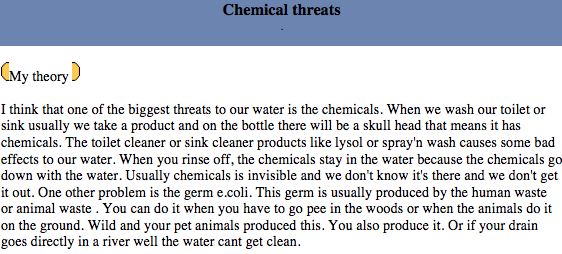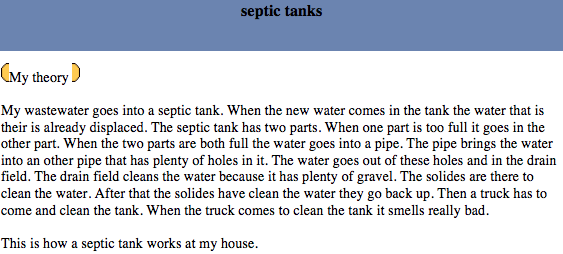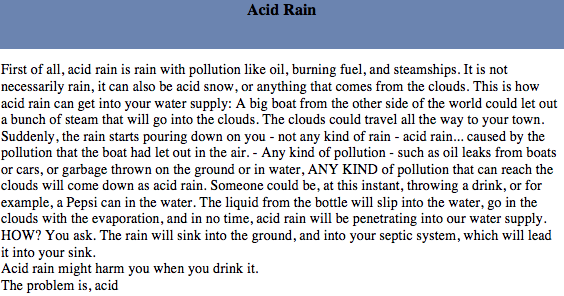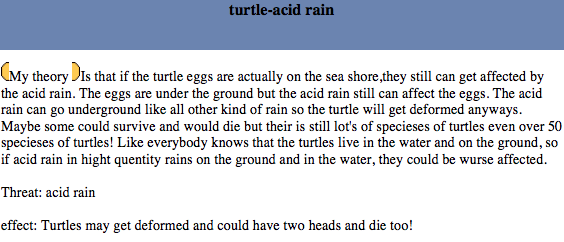
What are the threats to the aquatic life in our pond area?
Throughout the 2007-2008 school year, several participating classes of the Remote Networked Schools initiative have worked on environmental issues. Having as a starting point internationally recognized environmental problems like climate change, ozone layer depletion or water pollution, students were asked to study their manifestation within their own community. Whether by identifying threatened species nearby their community, by providing a historical overview of their region's climate or by studying local water bodies, pupils of the Remote Networked Schools have questioned causes, consequences, and solutions related to these environmental problems. Let's see how a classroom from the Eastern Township School Board did.
Using the Knowledge Forum, an asynchronous learning spaces designed to foster and support a knowledge building process, students investigated current and potential threats of a pond in their locality.In response to the following question : What are the threats to the aquatic life in our pond area?, students have identified several of them: the chemical contamination of domestic or agricultural origin, the acid rain, the proliferation of bacteria and algae and the sedimentation of streams resulting from human activity. In their discussions, the students addressed the water pollution problem from different perspectives. Through their contributions to the collective discourse, we will now see how they deepened their understanding of this issue.
They conducted research on possible causes of chemical contamination.


By questioning the processes of water purification, they discussed the operation of a septic tank.


They investigated acid rain and its causes. They wondered about their potential impact on the pond, its fauna and flora.


Besides these two pollution types, students have also discussed the problem of sedimentation, and that, related to the various animals having pond as habitat. Let's see how they understood the sedimentation's negative impacts on beavers.



In order to fully comprehend the problem, students have used other concepts and phenomena such as photosynthesis. According to them, sedimentation of water bodies reduces aquatic flora's sun intake. These are plants that serve as basic food for species such as beaver.





We can see that by connecting the ideas and concepts that emerged from their collective knowledge building process, students understand the interdependency within an ecosystem like the pond and how a simple perturbation on a single component can affect the entire system.
